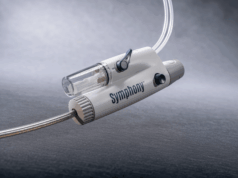
A recent study published in the Journal of Vascular Surgery: Venous and Lymphatic Disorders looked at varicose vein surgery after acute isolated superficial vein thrombosis (SVT) in daily practice, determining that the management of SVT should be guided by a careful assessment of each patient’s individual circumstances and risk factors. The INSIGHTS-SVT study, a multicenter, prospective cohort study, featured 197 invasively and 675 conservatively treated patients with SVT, is hoping to discover if surgical intervention has potential association with the occurrence of venous thromboembolism (VTE) and bleeding events.
“While generally considered a benign condition, SVT is frequently associated with substantial pain, swelling, and discomfort in affected patients,” the study authors, led by Thomas Noppeney (Department of Vascular and Endovascular Surgery, Marta Maria Nuremberg Hospital, Nuremberg, Germany), stated. “Furthermore, if left untreated, SVT can progress to potentially life-threatening conditions such as deep vein thrombosis (DVT) or pulmonary embolism (PE).”
Noppeney and colleagues cited the European Society for Vascular Surgery (ESVS) 2021 Clinical Practice Guidelines on the Management of Venous Thrombosis, which advocate SVT management approaches that are largely contingent on the severity of the symptoms and how likely the SVT is to progress to DVT or PE. Those patients with mild to moderate SVT can potentially get benefits from non-invasive interventions, such as compression stockings or nonsteroidal anti-inflammatory drugs, while patients with more extensive SVT may require more aggressive treatments like anticoagulation or surgical intervention.
Those patients with more extensive SVT can undergo surgical procedures including thrombectomies and phlebectomies, which entail the removal of the thrombus or affected vein, as well as the ligation of the affected vein.
“In the past, emergency or urgent surgical therapy involving the ligation of the saphenofemoral junction (SFJ) or saphenopopliteal junction (SPJ) was the standard approach for rapidly ascending or orifice-related SVT of the superficial truncal veins to prevent DVT by ingrowth into the deep venous system,” the study authors said. “However, a paradigm shift in this approach towards conservative treatment has emerged in recent years.”
The results of this study showed that, of the 872 patients who were included over the 12-month period, 675 received medical therapy only and 215 patients underwent vascular surgery. Of those 215 patients, 70 underwent vascular surgery within three months of the SVT diagnosis, 136 between four and 12 months, and finally nine had interventions during both periods.
Of the 872 patients included, 817 of them received anticoagulation therapy as the initial treatment choice at baseline. As for how many of each group received anticoagulation, 182 of the 197 patients who underwent surgery and 635 of the 675 patients who did not undergo surgery received anticoagulation. Out of the 197 patients who underwent surgery, 141 received a form of non-pharmacological treatment as well as anticoagulation therapy. Patients who received anticoagulation therapy typically did so for 28 days for patients who underwent surgery and 35 days for patients who did not.
The most commonly performed interventions within the first three months include endovenous thermal ablation (EVTA), vein stripping, and ligation of the SFJ or SPJ.
“A great majority of patients enrolled in the registry (93.4%) received anticoagulation at baseline,” the study authors stated. “Among patients who received surgery compared to those who did not, fondaparinux was administered at baseline to 125 patients versus 417, low molecular weight heparins were given to 48 patients versus 170, and other anticoagulants like direct oral anticoagulants, vitamin K anticoagulants, and unfractionated heparin were used by nine patients versus 48.”
There were 51 patients who were treated conservatively with the primary outcome of symptomatic VTE within the first three months, split between 37 patients with varicose veins and 14 patients without varicose veins. This contrasts the 16 patients who underwent surgical treatment that experienced this outcome.
“This data indicates that there was no significant difference between the two groups in terms of symptomatic VTE within the first three months,” the study authors wrote.
There was an additional analysis performed, which focused on the incidence of VTE outcome before and after invasive therapy and in conservatively treated patients. There was no statistically significant difference between the two groups.
This study sheds light on the utilization of invasive treatments in the management of SVT, revealing that these procedures were relatively infrequent, only accounting for 8% of all patients within the first three months after study inclusion or 23.6% during the one-year follow-up.
“In summary, the study showed that early surgical intervention of superficial phlebitis was associated with low risk for VTE complications,” The study authors states. “Consequently, the decision regarding treatment modality should be based on a careful individual assessment of the potential risks and benefits for each patient.”
Nearly every patient in this study received anticoagulation or a combination of anticoagulation and surgical interventions. The study concludes that anticoagulation therapy does not significantly confound the results.
Other key findings of the study include that there is no significant difference in the incidence of symptomatic VTE between conservatively and invasively treated patients with acute isolated SVT of the lower limbs. However, the team does state that invasive treatment may inherently heighten the risk of bleeding events. They recommend that the decision made regarding the treatment modality should be based on a careful individual assessment of potential risks and benefits for each patient.
“These outcomes align with previous studies, including a Cochrane systematic review by Di Nisio et al, which concluded that anticoagulation alone typically suffices for SVT treatment, and the evidence for surgical interventions is not compelling,” the study author stated. “The ESVS 2021 Clinical Practice Guidelines on the Management of Venous Thrombosis also advocate for anticoagulation as the primary approach for SVT treatment, specifically recommending surgical or endovascular interventions only after the inflammatory and prothrombotic phase has concluded, which is typically no sooner than three months after SVT onset.”
The authors do state that the study did not evaluate long-term outcomes or quality of life, which they note are likely important factors in the SVT management decision-making process. In the future, long-term studies may be needed to determine the long-term benefits and risks for each individual patient’s circumstances.
“In conclusion, this study with real-world data contributes to our understanding of SVT management by highlighting the importance of individualized treatment strategies, appropriate timing of interventions, and the need for continued research to refine our approach to this condition,” Noppeney and colleagues concluded. “It reinforces the notion that the management of SVT should be guided by a careful assessment of each patient’s individual circumstances and risk factors.”









